A refundable Child Tax Credit would help NC children thrive
Download a PDF of the Fact Sheet here
No matter where we come from or what we look like, we all want to provide for our children and give them every opportunity to thrive. In 14 states across the country, legislatures have adopted child tax credits that reduce child poverty, improve wellbeing, and make state tax codes fairer.1Aidan Davis and Neva Butkus, “States Are Boosting Economic Security with Child Tax Credits in 2023” (Institute on Taxation and Economic Policy, September 12, 2023), https://itep.org/states-are-boosting-economic-security-with-child-tax-credits-in-2023/. North Carolina should follow suit. Legislative leaders in the General Assembly should implement a bold, fully refundable Child Tax Credit (CTC) for low- and moderate-income families, choosing the wellbeing of children and communities over policies that tilt our tax code in favor of large corporations and the wealthy few.
Here are just a few of the benefits North Carolinians can expect from a bold state CTC:
Dramatic reduction in child poverty
Nearly one in five children live below the poverty line in North Carolina — that’s less than $29,950 a year for a family of four.2“Poverty Thresholds,” United States Census Bureau, January 23, 2024, https://www.census.gov/data/tables/time-series/demo/income-poverty/historical-poverty-thresholds.html. The income threshold for poverty and the data on child poverty are from 2022, the most recent year that data is available. CTCs are a proven, poverty-busting tool: in 2021, the temporary expansion of the federal CTC slashed child poverty in our state by more than 40 percent.3Danielle Wilson et al., “State-Level Poverty Impacts of the Child Tax Credit in 2021” (Center on Poverty & Social Policy at Columbia University, 2023), www.povertycenter.columbia.edu/publication/2023/state-level-impacts-of-2021-child-tax-credit. A bold state CTC for low- and moderate-income North Carolinians — one that provides $1,900 for kids under 6 and $1,600 for older children — would reduce child poverty by nearly one-third, lifting over 100,000 North Carolina children above the poverty line.4Special data request to the Institute on Taxation and Economic Policy and the Center on Poverty & Social Policy at Columbia University, April 2024.
Improved health and wellbeing outcomes
The benefits of a CTC go beyond poverty reduction. A sizeable body of research on tax credits for low- and moderate-income families has found that these policies are linked to improved infant and maternal health, and that children see better school performance, increased college enrollment, and greater lifetime earnings.5Chuck Marr et al., “EITC and Child Tax Credit Promote Work, Reduce Poverty, and Support Children’s Development, Research Finds” (Center on Budget and Policy Priorities, October 1, 2015), https://www.cbpp.org/research/eitc-and-child-tax-credit-promote-work-reduce-poverty-and-support-childrens-development. These outcomes are unsurprising: households experiencing low-incomes know best what their families need and spend the bulk of CTC income on basics necessities and child-related spending, such as housing, food, childcare, and school supplies.6Jonathan Fisher, Jake Schild, and David Johnson, “Spending Responses to the Child Tax Credit Expansions” (Washington Center for Equitable Growth, April 2, 2024), https://equitablegrowth.org/working-papers/spending-responses-to-the-child-tax-credit-expansions/.
Increased fairness in an “upside-down” tax code
North Carolina’s tax code is upside-down, meaning that people with the lowest incomes pay the highest share of their income in state and local taxes. NC families with incomes below $22,000 pay almost 11 percent of their income in state and local taxes, while the richest 1 percent of households pay just 6 percent.7Logan Harris and Alexandra Sirota, “Who Pays Taxes in North Carolina?” (NC Budget & Tax Center, January 9, 2024), https://ncbudget.org/who-pays-taxes-in-north-carolina/. In other words, North Carolinians’ incomes are more unequal after state and local taxes are collected than before. A refundable CTC would provide a much-needed corrective to our tax code by putting dollars back in the pockets of regular families — families working in under-compensated but essential professions in health care, manufacturing, retail, and education.8“Program Participation Data Dashboard, North Carolina,” Center on Budget and Policy Priorities, accessed April 5, 2024, https://apps.cbpp.org/program_participation/#geo/100/37/def/states--north-carolina.
An economy that thrives when people have what they need
North Carolinians know that people drive our economy — as workers, consumers, and caregivers. Businesses and our economy do well when people are doing well, but poverty holds back too many in our state from fully participating in economic life. Child poverty in particular carries enormous economic costs for society in the form of lost productivity, increased health and crime costs, and increased costs associated with child homelessness and maltreatment.9Michael McLaughlin and Mark R Rank, “Estimating the Economic Cost of Childhood Poverty in the United States,” Social Work Research 42, no. 2 (June 1, 2018): 73–83, https://doi.org/10.1093/swr/svy007. When North Carolinians have the income that they need to buy nourishing food, stay safely housed, and access childcare, our economy will benefit from the contributions that we all have to offer.
The bottom line? NC is a wealthy state that can afford to invest in children
A fully refundable state CTC is a powerful, common-sense investment in children and families that NC can afford to make. It would cost the state a little over $2 billion each year to establish a CTC capable of reducing child poverty by almost one-third.10Special data request to the Institute on Taxation and Economic Policy and the Center on Poverty & Social Policy at Columbia University, April 2024. By comparison, the scheduled elimination of the corporate income tax and continued reductions in the personal income tax rate will mean a loss of over $13 billion in public money per year when fully enacted.11Alexandra Sirota and Logan Harris, “NC Leaders’ Tax Cuts for Wealthy Mean We Will Lose More than $13 Billion for NC Needs” (NC Budget & Tax Center, October 10, 2023), https://ncbudget.org/nc-leaders-tax-cuts-for-wealthy-mean-we-will-lose-more-than-13-billion-for-nc-needs/.
Tax cuts for the wealthy have failed to deliver on promised benefits for regular NC families — it is past time for legislative leaders in the General Assembly to choose communities over corporations. A fully refundable state CTC will help families afford the basics, boost local economies, and slash child poverty levels across the state, with benefits felt in our communities for years to come.
What does "fully refundable” mean?
- A “fully refundable” tax credit means that if the value of the credit is higher than the amount of income taxes a household owes (a.k.a. their income tax liability), the difference will be issued as a refund.
- Full refundability ensures that the lowest income families still receive the full value of the credit, and therefore drives a large part of the poverty-reduction impacts of the CTC.12Elaine Maag, “Keeping Child Tax Credit Fully Refundable Is Critical to Low-Income Families,” Tax Policy Center, 2022, https://www.taxpolicycenter.org/taxvox/keeping-child-tax-credit-fully-refundable-critical-low-income-families.
- Full refundability also corrects for the disproportionate share of income that the lowest-income families pay in taxes other than income tax, such as sales and property tax.


